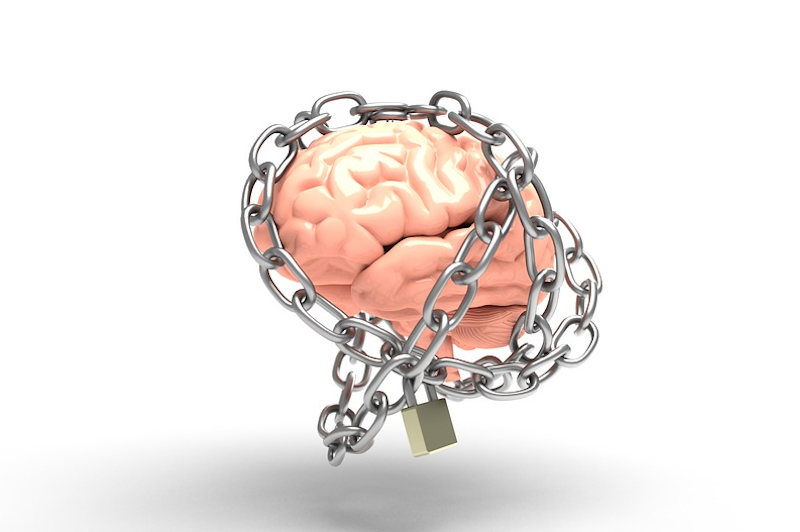Sex Addiction 6/7: Neuroscience
-
-
Thaddeus Birchard
Sharing the neuroscience of sex addiction with clients can help them to understand and circumnavigate their arousal chemistry, and relieve some of their guilt and shame. In the penultimate part of his blog series, psychosexual therapist Dr Thaddeus Birchard outlines the basics, from the role of vasopressin to the purpose of keeping an ‘urge diary’

At the assessment session, if sex addiction seems to be indicated, I always make the point that the unwanted behaviour was not chosen but that it just emerged. No one would choose a disruptive and damaging pattern of sexual behaviour. While a person is not responsible for having the behaviour with its erotic high, that person is responsible for doing something about it.
Rob (not his real name) came to see me about his use of recreational drugs, which took him into sexual infidelity. The drugs would have impaired his cognitive processes and taken away his ability to make rational decisions. When I told him this, he could not hear me. He had been raised in a devout Evangelical Christian household and his levels of guilt and shame were overwhelming. He had a persecuting inner voice powerfully located on the ‘attack self’ point on Nathanson’s ‘shame compass’ (see Blog 4 on Shame). To help him see what was going on, I took him through the neuroscience of sexual addiction.
Explaining the neuroscience of sexual addiction to clients
I am not a neuroscientist, so my explanation is very simplistic. I draw a diagrammatic outline on the flipchart to help make the explanation clearer. I draw the brain and highlight the limbic system, which is the part of the brain that handles threats, and the prefrontal cortex, which makes executive decisions. The limbic system makes emergency responses. Let us say that someone ‘acts out’ on stress. A feared situation lies in the near future and this anxiety is experienced as intolerable. The automatic response, the emergency response, is to escape into sexual behaviour, for example, internet pornography. Not only is this an escape but it is an escape powerfully reinforced with an erotic high.
As this is repeated, this becomes a fundamental neuropathway in the brain. In other words, this becomes the ‘go to’ response to stress. There is an adage in neuroscience that ‘neurons that fire together, wire together’. This response is the result of changes in the brain and, in effect, the response involves a biological predisposition. Human beings are novelty-seeking creatures and there is plenty of novelty to be found on the internet. Arousal chemistry in the brain shuts down rational choice. Furthermore, in men, when they are being sexual, the brain has high levels of vasopressin. Vasopressin is the brain chemistry of persistence and focus. The process also has a powerful reward – sexual pleasure. With internet pornography, this reward is delivered on a random basis. In other words, the reward comes on an unpredictable basis. Random reinforcement is more addictive than predictable reinforcements. It is like playing a slot machine. You do not know when you are going to hit the jackpot. In this case, the jackpot is a scenario that matches your sexual template.
Using an ‘urge diary’
How is this treated? I give the patient an ‘urge diary’ and ask them to keep a note of their urges to act out and, especially, to notice the precursor to the behaviour. Once the precursor is
established, the way to avoid acting out is to take this straight to the prefrontal cortex so that a more suitable decision can be made. Keep in mind that the ‘emergency response’ is deeply embedded, and this new response is difficult to maintain. With time, the new response becomes the default response. The old emergency response begins to fade. In my experience, the process of a stable recovery takes about a year to 18 months to achieve.
The impact of sharing the neuroscience
I go into so much detail on the neuroscience to help the individual understand that there is a biological underpinning to the behaviour. It is not just a question of ‘saying no’ or acting according to your moral compass. During sexual arousal, the moral compass is simply not available. This explanation tends to relieve some of the guilt and shame. It sets out a clear explanation. It is an attempt to help the person understand that, while he is not responsible for having the behaviour, he is responsible for doing something about it. At the end of the assessment session, I ask “What are you feeling now?” The answer is almost always relief: relief because he has been understood, and relief because there is an effective recovery programme available.